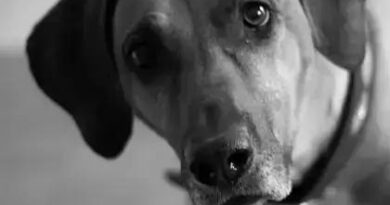What is: Artificial selection in dog breeding
What is Artificial Selection in Dog Breeding?
Artificial selection in dog breeding refers to the intentional breeding of dogs to produce specific traits or characteristics. This process has been utilized for centuries, allowing breeders to enhance desirable qualities such as size, temperament, and appearance. By selecting parent dogs with preferred traits, breeders can influence the genetic makeup of future generations, leading to a diverse range of dog breeds that we see today.
The History of Artificial Selection
The practice of artificial selection dates back thousands of years, with early humans selectively breeding dogs for various purposes, including hunting, herding, and companionship. Over time, this led to the development of distinct breeds, each tailored to fulfill specific roles in human society. Understanding the historical context of artificial selection helps us appreciate the intricate relationship between humans and dogs throughout history.
How Does Artificial Selection Work?
Artificial selection operates on the principles of genetics and heredity. Breeders identify dogs that exhibit desired traits and mate them to produce offspring. The offspring are then evaluated, and those that best represent the desired characteristics are selected for further breeding. This selective process can be repeated over generations, gradually reinforcing the traits that breeders aim to enhance.
The Role of Genetic Variation
Genetic variation plays a crucial role in artificial selection. The more genetic diversity present in a breeding population, the greater the potential for producing offspring with a wide range of traits. Breeders must carefully manage this genetic variation to avoid inbreeding, which can lead to health issues and reduced vitality in dog breeds. Maintaining a healthy gene pool is essential for the long-term success of artificial selection.
Common Traits Selected in Dog Breeding
Breeders often focus on specific traits when engaging in artificial selection. These can include physical characteristics such as coat color, size, and ear shape, as well as behavioral traits like temperament and trainability. By prioritizing these traits, breeders can create dogs that not only meet aesthetic standards but also possess the qualities that make them suitable companions or working animals.
The Impact of Artificial Selection on Dog Health
While artificial selection has led to the creation of many beloved dog breeds, it has also raised concerns about the health implications of breeding practices. Some breeds are prone to genetic disorders due to the limited gene pool and the emphasis on specific traits. Responsible breeders are now focusing on health testing and genetic screening to mitigate these risks and promote the well-being of their dogs.
Ethical Considerations in Dog Breeding
The practice of artificial selection in dog breeding raises ethical questions regarding the welfare of the animals involved. Critics argue that prioritizing certain traits can lead to health problems and suffering for the dogs. As a result, many breeders are adopting more ethical practices, emphasizing the importance of health, temperament, and overall well-being in their breeding programs.
Modern Trends in Dog Breeding
In recent years, there has been a shift towards more responsible breeding practices that prioritize health and temperament over purely aesthetic traits. This trend reflects a growing awareness of the importance of genetic diversity and the need to address health issues within certain breeds. Additionally, the rise of mixed-breed dogs and designer breeds has introduced new dynamics into the world of artificial selection.
The Future of Artificial Selection in Dog Breeding
As our understanding of genetics continues to evolve, the future of artificial selection in dog breeding may see significant advancements. Techniques such as genetic testing and gene editing could revolutionize the way breeders approach the selection process, allowing for more precise control over traits while minimizing health risks. The ongoing dialogue about ethical breeding practices will also shape the landscape of dog breeding in the years to come.



